One Spectator Among Others: Herman Asselberghs
In the series ‘One Spectator Among Others’ Herman Asselberghs and Gerard-Jan Claes invite various passionate film lovers to elaborate on their viewing practice by email. Filmmakers, artists, critics, researchers, authors, programmers, cinemagoers, TV enthusiasts, Netflixers, YouTubers, torrent users... Which customs and habits, regulations and prohibitions, places and patterns are part of their viewing practice? What place does film-watching have in their professional and personal lives? And is the movie theatre (still) part of their relationship with film? The series offers an introspective view of spectatorship as an activity and attitude, as a tenacious practice of watching, listening, reading, feeling, doing and thinking, with the spectator as a writer of their own singular story, with their own personal style, vocabulary, and idiosyncratic use of accents and punctuation. But always also merely one spectator among others.
Professional spectators and Sunday viewers, economical viewers and polyviewers, always-and-everywhere-viewers, legal and illegal viewers, model viewers, social viewers, solitary viewers, solidary viewers, distracted viewers, enchanted viewers, youthful viewers, adult viewers, secret viewers, onlookers, eccentric viewers, gloomy viewers and peepers. Never before have there been so many opportunities to shape one’s own viewing practice. Never before have people watched so much, at all imaginable times and places, in all conceivable positions and relations. Our film-watching has been atomized. We look in a fragmented but not necessarily aimless way. We may watch the same films but not necessarily at the same time. The film spectator has taken to the street. Waiting for the metro, someone bursts out laughing at who knows what on their smartphone. Down the street, someone is sitting on a bench, moved by the emotional denouement of an old romcom, or excited at the trailer of the next superhero movie. Our social life is punctuated by (pressing) questions, (cautious) recommendations and (resolute) judgments about the films available: “Did you watch this? And have you seen that? Not to be missed! Make sure to check it out! Overrated!” With all of the viewing pleasure, but also the overchoice, overkill or forbearance that entails. ‘One spectator among others’ attempts to see the trees for the wood through a simple observation: we watch. Then, questions arise. How, what, where, and why?
The series takes off with Herman Asselberghs as guinea pig. He makes films, writes about film, teaches at the film department of LUCA School of Arts/Sint-Lukas Brussels and is co-founder of the artist-run production and distribution platform Auguste Orts. He lives and works in Brussels.
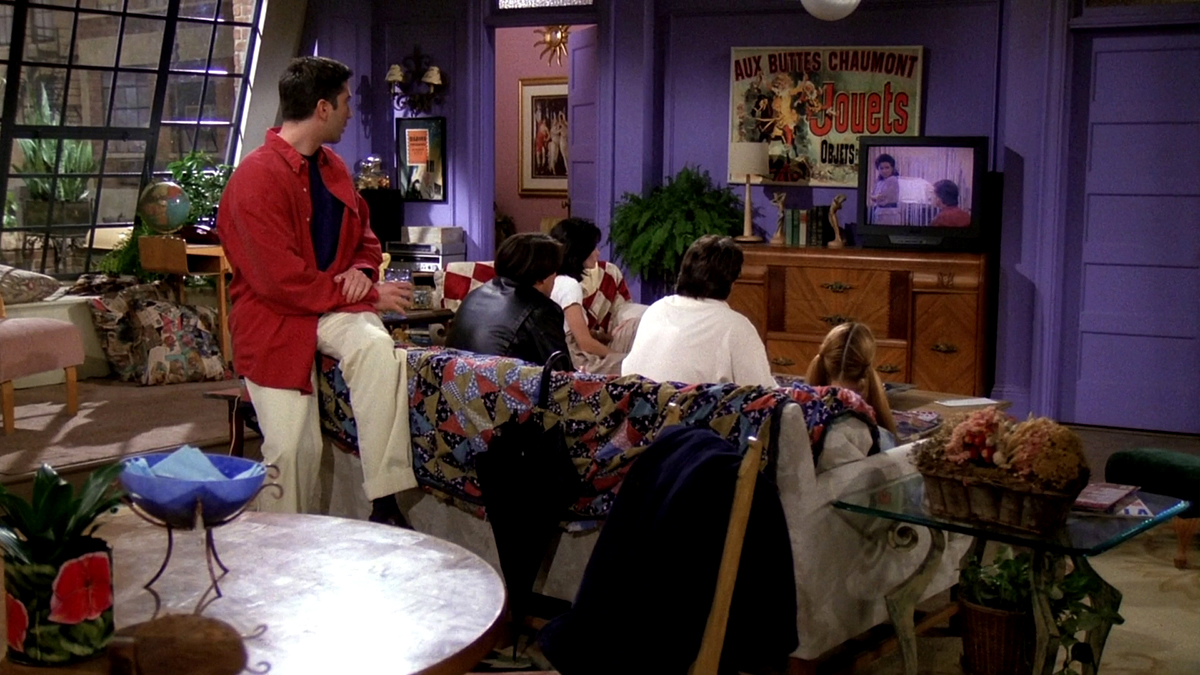
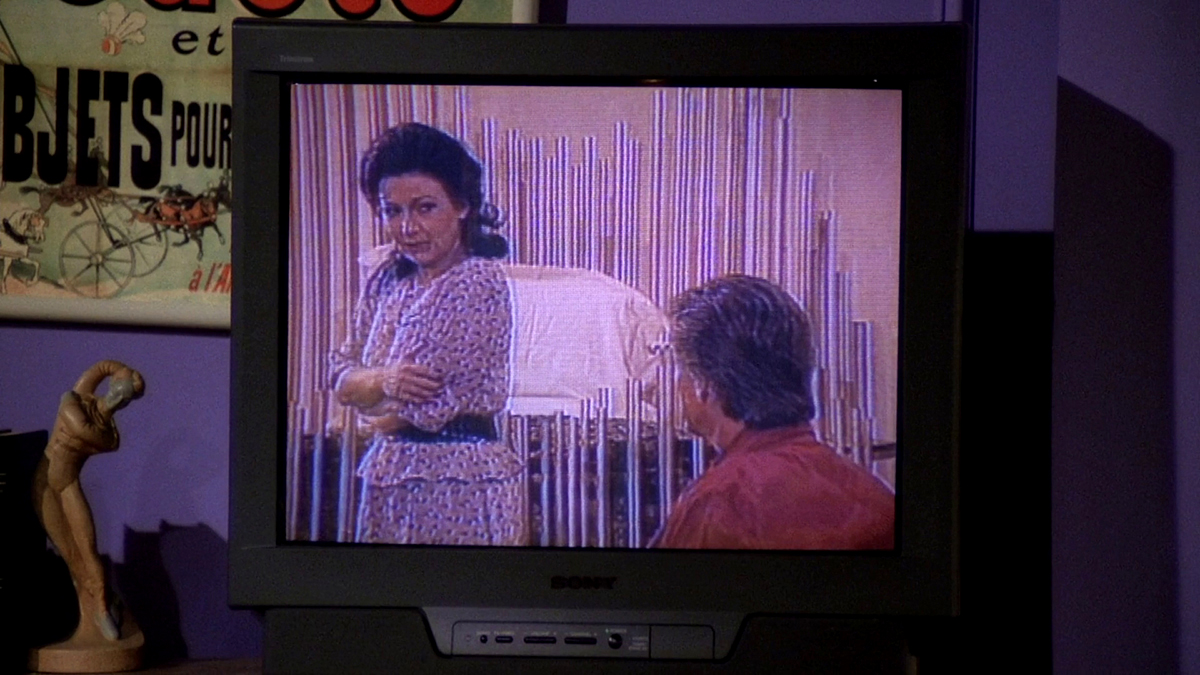
Gerard-Jan Claes: When did you last go to the movies?
Herman Asselberghs: That must have been somewhere in the beginning of March. I really don’t remember which film I saw. Perhaps Martin Eden at Cinema Palace? Not long before the lockdown, I definitely saw Miroir Séb Fragile! and Euphoria at the 23 Quai du Commerce, 1080/1000 Bruxelles exhibition at ARGOS. And Projection Instructions, at Anouk De Clercq’s book presentation (Where is Cinema?, 2019) in CINEMATEK. If I include the screenings in my film studies classes right before the school closed, Chronique d’un été, Riddles of the Sphinx and Lemonade are also on the list.
Which films, series and other audiovisual works have you watched since?
I should write them down, really, because I always have a hard time calling to mind what I’ve seen recently. But I’ll give it a go, in no particular order: Dark Waters, Mon oncle d’Amérique, Richard Jewell, La chatte à deux têtes, I Can’t Go Back to Yesterday, Numéro deux, When Harry Met Sally, General Report I & II, Juste un Mouvement, Mrs. America, I May Destroy You. On a variety of platforms: streaming through MUBI, Netflix, Proximus, Popcorn-Time, UbuWeb or on DVD. On a variety of screens: smart TV or laptop.
The question of which films I have watched is closely related, I feel, to the question of which films I have missed and still want to see. To name but a few: An Elephant Sitting Still, Liberty: An Ephemeral Statute, Muidhond, Parasite, Terminator: Dark Fate, Portrait de la jeune fille en feu, Marriage Story, Wasp Network... And three film events I was really looking forward to have stayed with me: the Courtisane festival (Kevin Jerome Everson in particular), Manon De Boer’s Downtime exhibition at the Gulbenkian Museum in Lisbon and the Belgian premiere of Victoria by Sofie Benoot, Isabelle Tollenaere and Liesbeth De Ceulaer at Docville.
Do you have a favourite place or setting to watch films?
For some years now, I mainly watch films on TV and laptop screens. But I do absolutely remain an old-fashioned film viewer who experiences projections on a big screen more intensely and regards his cinema visits as inextricably bound up with the city centre. I like going to the movies on my own. Going to the cinema on my own means more to me than just watching the film. It also revolves around managing my own time and itinerary. With no preconceived plan. In the mere knowledge that the film starts at a particular time, the walk to the cinema might lead me past a bookstore or a bar. And when leaving the theatre, the same more or less unpredictable scenario may apply. For me, “going to the movies” certainly includes the relationship between the exact starting time, the screening’s precise duration and the indefinable time period before and after. But the opposite is equally possible: I leave the house by bike on a precisely timed trajectory, enter the theatre right on time and immediately return home afterwards. Even in the case of such a functional use of the cinema, the city centre forms the crucial backdrop for a journey of anticipation and fulfilment. I don’t see myself driving to a multiplex along the ring road in order to go to see a film.
Occasionally, I go to the cinema to surrender to the screen, the beam of light, the spatial sound, the space. Did I really need to see Les misérables? No. Was It Must Be Heaven absolutely indispensable? Quite the contrary. Was Martin Eden at the top of my list? Not at all. Still, I strung together these three films at Cinema Palace a while ago, without premeditation. From about seven pm until well past midnight. The screening times allowed me to pass by the box office without any noteworthy break and retake my seat in the theatre. And I still have a vivid memory of these three films. Which is by no means always the case with titles I’ve watched with interest on TV or computer screens.
How does this love of the movie-theatre space relate to watching films in other places and settings?
I’ve noticed that some of the cinema-environment rules shine through when I watch films on a laptop. I choose the film in advance. I will not start watching the film if I can’t watch it in its entirety. I prefer the evening hours, when all is quiet and the lights are off. I rarely use ear or headphones. I sit up straight. Which doesn’t mean I don’t sink back, pause the movie, go to the refrigerator or check my emails. In no way do I try to approach the cinema situation at home: I’m unfamiliar with home cinema systems or wall projections. But my home-viewing behaviour certainly shows traces of stubborn cinema habits. Which is strange, really, as I have undoubtedly spent (even) more hours in front of the television than in the movie theatre in all these years.
When do you usually watch films? Do you prefer specific moments?
I could easily go to the movies at any time of the day. As long as I arrive on time: you won’t be surprised to hear that I want to see a film from the very start. At home it also doesn’t matter when films are watched. The course of a working and school week naturally entails its own patterns, so solitary and/or joint image intake usually occurs in the evening. In coronavirus times, the lunch hour and late-night hours have turned out to be the rule rather than the exception. I don’t know if there is a plan, apart from the concrete agreement to be at the theatre or sit in front of the television on time. Watching films is such an established practice that it presents itself without much ado, à l’improviste or as planned.
My two favourite moments to enter and leave the movie theatre: a rainy autumn evening or a sunny summer afternoon. Brussels will certainly do, but Manhattan is still my favourite place for this ritual. I have never encountered a cinematic experience deeper embedded in city life than in that dense place; the contrast between inside and outside is huge. Or not at all: perhaps surrendering to the projection and being incorporated into the streets share exactly the same intensity. Leaving CINEMATEK late at night often produces equally magical moments: still in the trance of the film screening, a deserted Rue Royale instantly makes you feel where Belgian Surrealism comes from.
There are weeks (sometimes months!) that I don’t go to the movies because there isn’t really anything I need to see. For you, the pleasure of going to the movies sometimes seems to prevail over the actual film.
Maybe you’re right. Maybe my love for the cinema experience surpasses my love for film. Of course, one cannot do without the other. And, there are quite a few films and filmmakers who mean more to me than “going to the cinema”. Films have taught me to see the world differently, more clearly. They still do. But maybe the cinematic experience initially and fundamentally grabbed me because of the “attention machine” that I believe it is, and which I have come to experience as such more consciously over time. In this respect, my itinerary does not differ from that of many other film viewers: the attention economy of the Internet and social media makes us thoroughly rethink the pros and cons of the movie theatre.
I do not experience film-watching as passive distraction but as activity, as an effortless exercise in creating attention. There are certainly plenty of legitimate arguments for a critical perception of film as mere entertainment, as mind-numbing escapism, as alienating spectacle, as a capitalist dream factory and as a technology/industry/economy with a problematic footprint. Yet the focus that the cinema situation manages to generate makes us feel and think. It is no coincidence, I think, that films seeking out both extremes or combining both elements are the ones that charm and occupy me the most. So, I will wax lyrical both about entire parts of demanding, cerebral film essays such as Lotte in Italia, Bilder der Welt and Riddles of the Sphinx, and about short moments in sensory post-cinema franchises such as John Wick, Mission Impossible and Avengers. For the same reason, I am equally sensitive to the tradition of experimental film in which the classic rules of plot, characters and standard film length come up against the use of “mere” light and sound, or of “mere” movement on the film screen. I can keep rewatching Flicker and Lapis, for example. I tend to go to CINEMATEK when they’re on the schedule, as if going to a concert to hear the music live.
Does that preference for the cinema experience, that “attention machine” targeting and grabbing you as a viewer, involve certain habits or routines?
Not really, although I prefer a seat in or around the centre of the theatre, which is motivated more by my desire to be able to hear the soundtrack in the best circumstances possible than by some preference for a certain distance or position towards the screen. For me, film-watching also means film-listening. The experience of spatial sound is a decisive reason for me to prefer cinema to television, laptops or smartphones.
So, the cinema experience still occupies a valuable place in your life, and in society more broadly? It’s not a matter of clinging to a bygone experience?
Of course, there’s not just one “cinema experience” or one “cinema”. We can talk about the absolute minimum that’s needed for the experience of “cinema”. How small is the screen allowed to be? How dark should it be? How big should the room be? How comfortable should the seats be? One thing is clear: there are huge differences between a company that’s quoted on a stock exchange, like Kinepolis, and a theatre that’s a collective initiative like Cinema Nova, a cultural institution like CINEMATEK or alternative cinema projects and screening initiatives like PleinOPENair in Brussels or Monokino in Ostend. They don’t only differ in terms of quality of projection or the design of the screening rooms, the main difference is related to sustainable community building. In this sense, I’m somewhat of an improper user of mainstream cinema, and a bad customer: I don’t buy snacks, I’m not interested in subscriptions, I don’t really watch the advertisements.
In my recent film studies classes, I pay increasingly more attention to the cinema experience and how that differs to the use of screens in other environments and through other systems and formats. It has turned out to be a good approach to address overt questions and underlying concerns of young people/budding filmmakers. Attention, distraction, overchoice, oversupply, mainstream, margin, fads, canon, community building, hegemony, opposition: these are all subjects that spring quite naturally from a questioning of the (non-)self-evidence of cinema. For me, too, going to the movies is not always obvious anymore. Like you, I sometimes do not set foot in a movie theatre for weeks.
Teaching at film school does feel like a long-term stay in the frontline of an ever-evolving visual culture. In direct contact with ever new waves of young people who, day in day out, intensively search for moving images, I learn first-hand about new habits and customs, about new possibilities and difficulties. Like all viewers outside the film school’s walls, film students no longer necessarily and regularly go to the movies in large numbers. But they watch more films than ever before. I will shy away from hasty, generalizing conclusions: less than a hundred students each school year does not seem to me to be a reliable sample. But I would, however, formulate one conclusion: there is no longer a shared film culture. When, at the beginning of the course, I sound out a class of 35 students on one recent film that everyone has seen, it doesn’t yield one single title. That even startles the most atomized adolescent and can open them up to a story of experiencing the duration, the place and the world of a projection together.
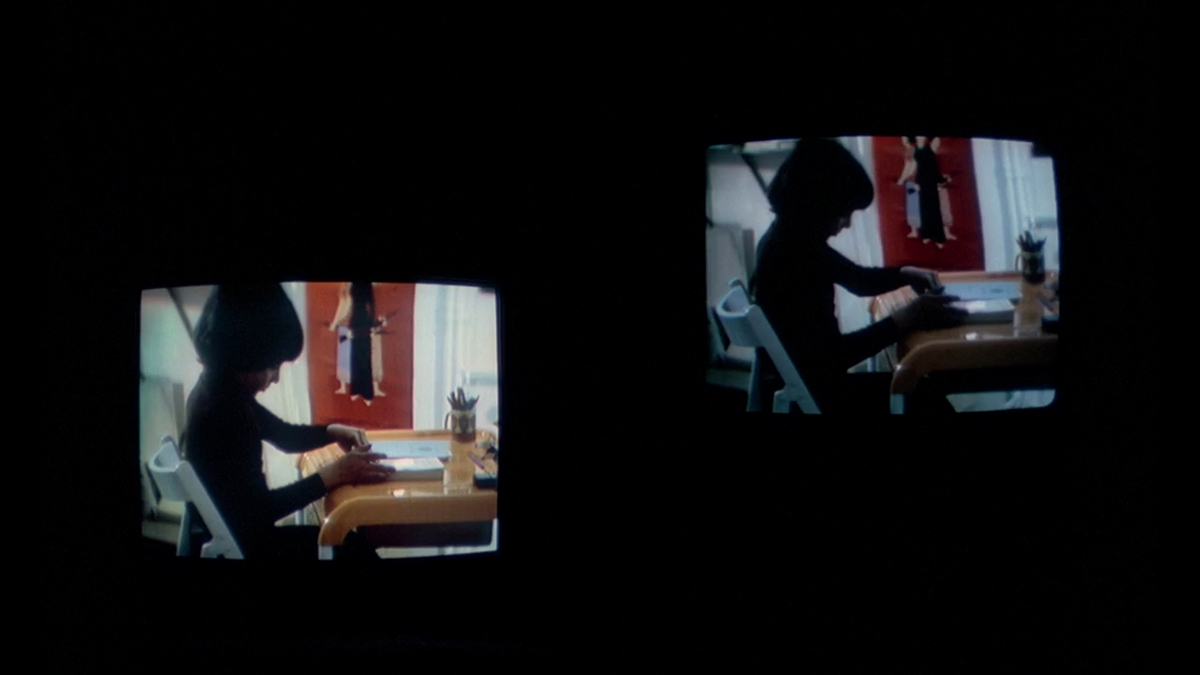
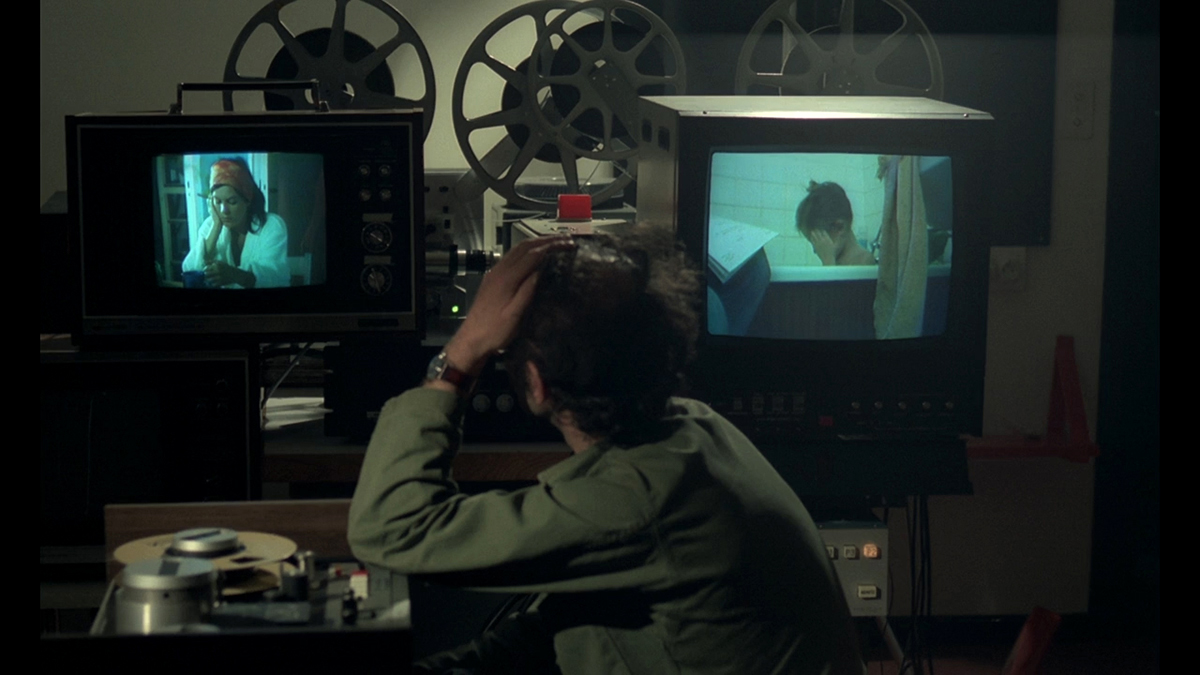
How important is being “alone” in that experience to you? Your cinema visits seem to be a largely solitary affair and less a social gathering.
I never say no to going to the movies together. But I like going to the movies alone and rarely if ever meet up with friends to go together, except for one-off screenings at CINEMATEK, Cinema Nova or BOZAR, among others, where I often and gladly run into those friends and acquaintances.
Why go to the cinema alone? The whole thing seems to me to be based on the beautiful formula “alone together”. If I step into the theatre on my own, I feel the notion of “togetherness” taking more effect. Or not at all, when I really don’t like the film and the audience is clearly into it. When you’re two (or more) people, another “together” takes shape in advance, between meeting at the entrance and the start of the actual projection, and afterwards, after the screening, on the street. In case of having company, there’s a less exclusive relationship with the entire cinema event.
Does that also apply to home-viewing? Or do other habits apply there?
Watching at home implies negotiations. In advance, afterwards, during. I love negotiating the choice, even the overchoice of today’s Netflix or Popcorn-Time menus. I like to chat after the film, even when there’s a possibility of disagreements over differing opinions. Watching things together is something I prefer in front of the television (whether or not connected to the computer), where the interaction with the screen and with each other is self-evident. Even when it comes to urging your fellow viewer to be silent at a moment when you don’t want to miss a second. Interruptions are usually reduced to a minimum, but they’re inevitable. In any case, the television is only switched on when one of us wants to watch something. And then it’s switched back off. Except late at night, when elaborate zapping still helps me to clear my head. And keeps me up to speed on today’s stream of images.
How do these negotiations on which films or series to watch work? How do you decide what to watch together?
At home, my partner, Agna, and our 18-year-old son, Kobe and I each have our programme to finish. All three of us watch a lot, no doubt. The highly regular habit of the three of us watching something together has lasted for a very long time. The negotiations necessary to reach an agreement are an integral part of our family life, but these days it’s hard to persuade an 18-year-old to watch something together. With him, I finished Mad Men during the lockdown. We have been watching Naruto and Naruto Shippuden for a while now. We’re talking about starting Breaking Bad. Or watching The Wolf of Wall Street for the umpteenth time or again his exquisite selection from South Park or Rick and Morty. Agna and I (and Kobe) have the fondest memories of completing the entirety of Friends several times throughout the years and seeing him grow (literally, too) in his way of “reading” it.
For years I vetoed, under protest from them both, a second television set on the ground floor, as a way in order to counteract divided viewing. Surprisingly, I succeeded quite well, until recently: Kobe’s long, “social” evening game sessions during the lockdown drove Agna and me downstairs to a second set, which, incidentally, moved from my father’s room at the residential care centre to Kobe’s room a year and a half ago, after my father’s death. It stays in the family! And the fact that Kobe has exclusively – and barely – used this device as a gaming monitor all this time is significant. Apparently, he preferred watching things together upstairs. Or it made a welcome change from his many hours of smartphone viewing in bed.
Negotiations between Agna and I have been going on for the past 25 years too, and the criteria have long since been clear: at home, she rarely wants to see fiction films that end badly, prefers to know what the story is about in advance, dotes on binge-watching series and wants her fair share of serious information intake. And so, when she is not devouring books, we watch documentaries (Once Upon a Time in Iraq!), British and American crime series (I skip Scandinavian products) and BBC quality products (A Very English Scandal!) together, and in between some meticulously chosen feature films of all kinds and nationalities on the TV screen (most recently The Trial) and occasionally in the cinema (where films are allowed to have unhappy endings). When I put it this way, two parallel tracks run together regularly, if not always: the family context, in changing formations, with broad, readily compatible agendas and my own viewing trajectory that covers a more specialized terrain.
How do you arrive at these specific titles? Who and what determine your selection?
In practical terms: I follow the field by reading. I read The Guardian on a daily basis, and not only the film section. I have a New Yorker subscription since last year and occasionally buy Les inrockuptibles. Thanks to the excellent school library, I regularly read Sight & Sound, Cahiers du Cinéma, Film Comment, Film Quarterly, Artforum, Aperture. Online, I try to follow +927, Mo Magazine, De Wereld Morgen, rekto:verso, e-flux journal and Sabzian. I consult the home pages of MUBI (a free school subscription) and Netflix (a Premium subscription) and check almost daily the broadcasting schedules of predominantly British TV channels with a view to selective recording and delayed viewing (through a Proximus subscription in urgent need of revision). I don’t follow the festival circuit, so I catch “festival films” when or if they end up in the cinema, on DVD or as a streaming link, or not. I keep an eye on the film programmes of CINEMATEK, Courtisane, Beursschouwburg, BOZAR and Nova. And often forget to go. I take recommendations very much to heart: rarely those of film critics, (almost) always those of loved ones, friends, students and colleagues in the audiovisual realm.
Would you call yourself an informed “professional viewer”?
After all these years, I suppose I know my way around the field. When imbibing any film today, accumulation is inevitably at play: an accumulation of my viewing experiences, viewing skills, knowledge, of my innumerable blind spots and black holes, meaning that I’m not an unbiased viewer. In general, however, I want to know as little as possible about a film in advance. A large part of my film enjoyment consists of the encounter with the film, even if it turns out to be a collision or a struggle. I hardly ever read reviews in advance. After I’ve seen the film, and when I really like it or when it really interests me, I like to read several substantial pieces and conversations with the filmmaker or other collaborators. I never read users’ comments. I don’t read enough blogs. I can’t say that I follow certain critics and reviewers, but I am always interested in the approaches and insights of Ginette Vincendeau, Erika Balsom, Nicole Brenez, Masha Tupitsyn, and David Thomson, among others. I am always game for a conversation to unravel the film. And, of course, teaching is an exquisite way of going into a film more deeply and exchanging thoughts about it.
A professional viewer, to me, is someone who lives off reporting what they have been watching. Someone who is paid to watch instrumentally. I don’t belong to that category (anymore). At least not in a strict sense. I haven’t written about film to order or for a living for twenty years. I don’t need to watch festival entries or scan the field from a curator’s perspective. Auguste Orts, the production platform that I co-founded, operates on a non-commercial basis. No one tells me what I have to teach in film school. My academic research is of an artistic nature. That might be it: I associate instrumental viewing with a professional activity or a recreational activity in which a person does not like to feel that they have dissipated working time and/or valuable free time. As a prototypical early-21st-century cultural worker, my immaterial labour and recreation overlap. In that sense, of course, I am the ideal professional viewer: I rarely have the feeling I’m working when I’m watching without getting paid. Using an old-fashioned witticism: my hobby is my profession, and vice versa. Not only in the world of culture and education does neoliberal austerity drive this passionate attitude to exhaustion and exploitation. I am lucky to operate from a privileged position: my age has made sure that I was able to escape precarious contracts at the educational institute where I work. In that and many other respects, I definitely belong to the past century: a time when a more or less certain trajectory was still possible.
You give the impression that you watch things in a very focused and active way. You find the time to watch films, you don’t watch them to kill time.
If “selective polyviewer” exists as a category, feel free to include me. I rarely feel called to watch something that interests me only moderately or not at all. So I miss a lot of top-rated titles in year-end lists. I think I usually decide to watch things based on my curiosity. I don’t always know what I like in advance. I do usually know what I don’t like. My family members know that I prefer a film that takes place in the present to a historical drama or a fantasy story. Or that I don’t want to see films with Morgan Freeman, Liam Neeson or Jan Decleir.
Rules are there to be broken, so a while ago my son taught me to watch the whole Tolkien/Jackson cycle. I’ve seen Seven a couple of times already, and I got fascinated by the series of action films by Jaume Collet-Serra. Decleir: never. Just to say that my field of interest is agile and variable. Probably the result of my curious and impatient character. Because I watch things easily, because taking in moving images rarely feels like an assignment, the dilemma between watching and not watching something hardly ever arises. I just watch whatever it may be. Then the true difficulty arises: how much patience and generosity can I display while watching something? That tends to surprise. I can be very categorical in my rejection of something or other. At home, they speak in no uncertain terms of my many prejudices (Scandinavian crime series are apparently just the tip of the iceberg). I rather see it as a matter of fun: as soon as I’m no longer having fun watching something, I get up, switch off the device, close my laptop. Or I don’t even begin with it.
Does that also explain the eclectic and expanded nature of your viewing practice? It seems hard to “connect the dots” of the films and series you’ve watched.
I think there’s a set of reasons for every viewing. Take Kommunisten, for example, which I recently watched on MUBI for the first time. I’m interested in how a filmmaker revisits and reuses existing material. In this case, Jean-Marie Straub is handling fragments from his own films as found footage. He glues together a handful of substantial pieces from his and the late Danièle Huillet’s films. I consider it a form of curatorship of his own back catalogue. Very different from Duras’s fascinating method of reuse: she tends to have her characters, settings and stories circulate between books and films. But watching Kommunisten, like any Straub-Huillet aficionado, was of course also inspired by curiosity about Straub’s output after his inseparable partner’s death. And I also wanted to find out if this strict cinema would survive on a laptop. Which it does quite well, I feel. For every film I watch, I can undoubtedly pinpoint a similar cluster of motivations.
A more recent example that I have been eager to share with friends and acquaintances is the streaming package Agna and I enjoyed over the course of one weekend: The Equalizer 2, Extraction and 6 Underground. We both love Denzel Washington’s trajectory and American action movies. Plus, I was curious about the directorial debut of the most remarkable stuntmen of the moment (their direct competitors did a better job with Atomic Blonde, I think) and about the state of affairs in the universe of Michael Bay (still as astonishing formally as its world view is repulsive).
A less complicated and equally worthy reason is often just the desire to watch a film together at home. Or the desire to go to the movies.
Could one define a thread that runs through or guides your choices?
Yes, I’m usually a faithful follower of a filmmaker’s trajectory, sometimes of an actor or actress, a cameraman or a producer, which is probably a remnant of my film education at CINEMATEK (which was then called the Filmmuseum) and De Andere Film, where I spend the eighties in retrospectives of the complete works of Minelli, Visconti, Fuller, Schroeter, Welles, Duras, Debord, Bresson, Fassbinder, Anger... I recognize this immersion in the universe of a complete oeuvre in the following of a living repertoire that gets created before your eyes over time. The films of Claire Denis, Todd Haynes, Woody Allen, Olivier Assayas, and Jean-Luc Godard have most certainly accompanied my past decades. Derek Jarman’s curtailed trajectory will forever remain present in me. And I am very curious about the further development of more recent trajectoray that I have been following closely, such as those of Kelly Reichardt, Ira Sachs, Bertrand Bonello, Mia Hansen-Love, Bas Devos, Jordan Peele, Ava DuVernay, Eduardo Williams, Judd Apatow, Mati Diop and, yes, Gerard-Jan Claes and Olivia Rochette. Losing sight of or renouncing a trajectory, a sudden delusion that turns out to be a mistake on second thought, a brush-off that turns out to be an incomprehensible error years later, a discovery that could become the start of a new trajectory, the clinging to a profound distaste (which is why I never miss a new Von Trier): all equally crucial variations on my reclamation of both familiar grounds and new areas in the land of film.
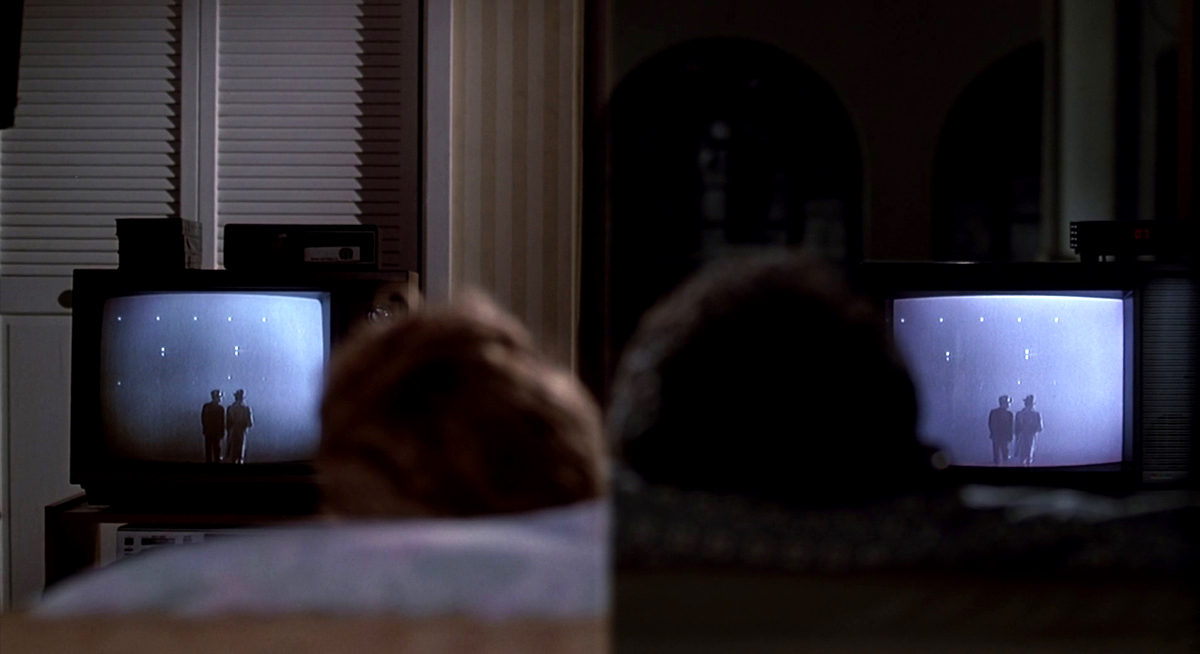
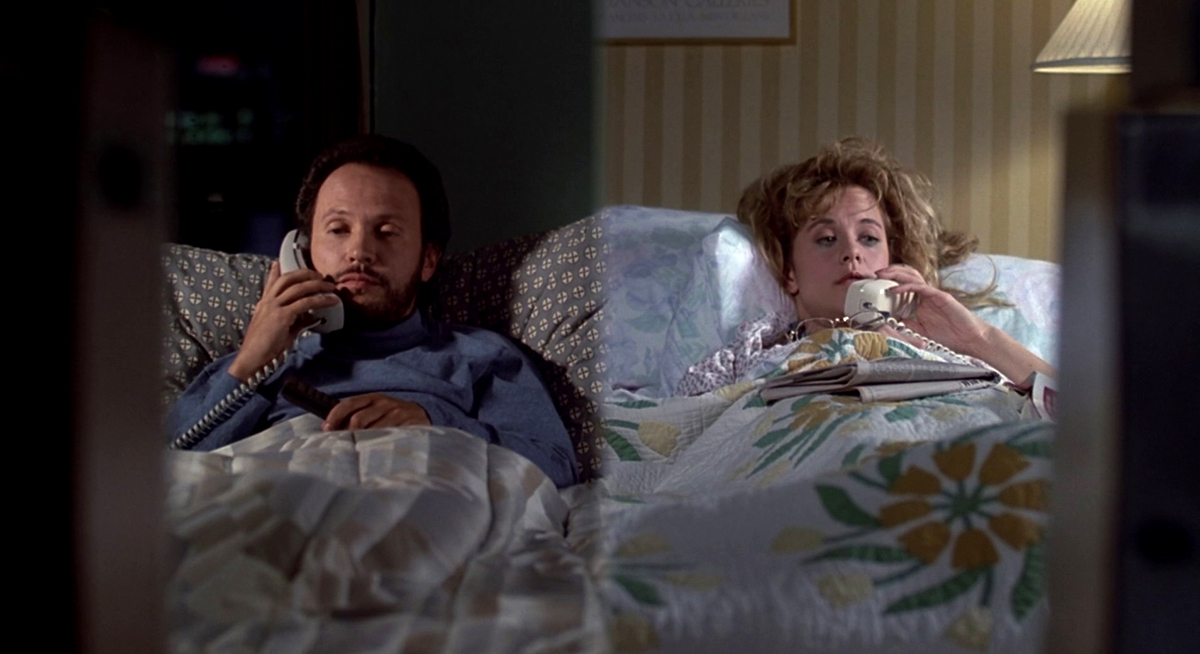
Are there any other selection criteria you use to create such a variegated collection?
I’m afraid my selection is not very systematic. It’s about singular routines, deeply rooted habits and unconscious processes, often more readable for others than for myself, I’m afraid. Like everyone else, I have my favourite filmmakers, genres (crime, sci-fi, comedy, musicals, horror and everything that escapes well-defined genres) and periods (mainly the late 1960s to the mid-1970s lately). But this extensive list is permanently subject to change. I’m always curious about new titles, names, styles, ideas, practices. I have only occasionally been watching the old classics, mostly in a teaching context (City Lights generates an engaging response, and I’d soon like to give Greed a try). Everything that complements, rewrites and corrects the canon can count on my attention. The same goes for the rich tradition of delirious exuberance (Jack Smith, Werner Schroeter, John Waters, Gaspard Noë, Jim Carrey, Tilda Swinton, Vincent Gallo and similar wild tempers). I don’t systematically follow Belgian/Flemish/Walloon films any more than I do British, Taiwanese, Australian, Macedonian or Colombian films: national cinema is not a category I am sold on.
The tradition of my own taste allows me to choose freely among the oversupply, to utter a heartfelt “yes” to this film and a firm “no” to another. The ability to sort and sift is the skill to keep out, turn down, forget and outright reject. Roland Barthes by the book, of course. It reminds me of his beautiful enumeration in Roland Barthes by Roland Barthes: “J’aime, je n’aime pas.” Or John Waters’s extended version in Crackpot: “101 Things I Hate” and “101 Things I Love”. With a slight penchant for exaggeration, I would say that the titles in my recently harvested viewing list are the ingredients of a personalized, consistent diet based on randomness. A sustained, self-selected diet. Not Spartan self-flagellation, but the attentive practice of a method that makes a wild selection from what’s offered, with amusement and satisfaction. When I think of a “diet”, I do not primarily think of an imposed normative system, but rather of a conscious way of dealing with things, a politics of a sustainable regimen based on selective abstinence. My variegated viewing list might give the impression that I give in to all viewing fodder and seem incapable of saying no. The opposite is true: like any other viewer in the midst of an unprecedented oversupply, I reject films more often than I embrace them.
You seem to really focus on choice. It could give the impression that you are watching in a disconnected and emancipated way, that you are your own autonomous curator, separate from categories and others’ stipulations, a spectator “without any persuasion of his own”.
I don’t want to create the impression of a free, autonomous viewer. Nothing could be further from the truth! My intake of moving images is equally influenced and determined by many factors, people, channels and systems. My taste doesn’t appear out of thin air. I watch and think and feel and speak and write from a specific, limited perspective. My knowledge is situated somewhere (not nowhere or everywhere), localized, embodied and thus marked and partial (instead of neutral or universal). In this sense, the eclectic film list below is the result of my running biography, formed by a mishmash of origin, class, race, gender, history, geopolitics.
In which films do your singular fascinations and viewing habits meet? Could you name names?
It will be clear by now that my film interests, preferences and fascinations fan out in all directions. Enumerating a limited list of titles would literally require a great deal of effort on my part. I hope the strictly incomplete list of cinema ingredients that seduce my eye and ear will do. In no particular order: hyper contemporary or totally outdated, made with virtuosity or without any skill, a strong presence of bodies or images without people, a command of the mainstream or a radical rejection of it, sensory or cerebral, delirious or cool, very fast or very slow, very short or really long, ear-splitting music or soundless, witty dialogues or stammering, immensely ambitious or unzealous, melancholic or hysterical baroque or minimalist, overkill or zero degree... Just to say that I’m fascinated by extremes. The half-baked middle quickly bores me. And I have an absolute preference for the alternation between, the juxtaposition of and the seemingly paradoxical overlap of extremes in one and the same film. All right then, a few titles: the sensuality of the stern Le diable probablement, the exuberant formalism of Hotel Monterey or La région centrale, the deafening silence of Sleep, the juvenile oldness of Film socialisme, the packed void of Blue, the campy seriousness of Superstar, the poetic provocation of Le camion, the European Americanism of The Apartment, the American Europeanism of American Gigolo, the philosophical iconoclasm of In girum imus nocte et consumimur igni...
It strikes me that in your own film work, in your writings and in conversations with you, contemporaneity occupies a crucial place, and could even qualify for a selection criterion, wouldn’t you agree?
Contemporaneity is indeed close to my heart, not in the sense of trendy or fashionable. I don’t care about the hype of the day, about what is in or out of fashion. But the question of contemporaneity on the other hand, is immensely fascinating to me. What does it mean to belong to these times? What does it mean to be modern? What does the history of being modern look like? Does being modern have a future? What possible relationships exist between actuality and history? Apart from the elementary pleasure that I continue to experience when watching films, these questions form the cluster of meanings that increasingly fascinate me in cinema. How can a film embody its time? When is a film dated? Can a film be ahead of its time? What is the sense and nonsense of film history, of canon formation? What to do with the classics? Those are the questions I explicitly put on the table in my film studies classes – intended for future filmmakers, not film theorists – and you’re right that they consciously and unconsciously direct my viewing practice, and my film practice. My teaching is nothing more than an ongoing report of my viewing practice, I’m afraid.
The same fascinations and concerns largely determine my reading and listening activities. I love it when a film, a book, a photo, a song tries to capture its time, to express it. And I love it when they try to place themselves completely out of their time. Everything in between, everything that doesn’t nourish the ambition to address its time intuitively and/or rationally, usually hardly fascinates me, or not at all. Works that succeed in, or only slightly fail at, standing both in and outside of their time, have my full attention and usually touch me deeply. Hence my love for late Godard (from Nouvelle Vague on), early Warhol (especially Sleep, the Screen Tests, Paul Swan), L’heure d’été and Doubles vies by Assayas, Safe and Far From Heaven by Haynes, Hotel Monterey and Letters from Home by Akerman, Saint Laurent and Nocturama by Bonello, and Conversation Piece by Visconti, but also, as you know, for the work of Kanye West and Wolfgang Tillmans (especially from Neue Welt on). To name but a few examples.
Would you agree if I observe in you two ways of watching: an engaged gaze and a studious gaze? That is, on the understanding that pleasure and study intertwine and that critical watching does not stand in the way of your viewing pleasure, and vice versa?
If by “study” you mean a studious, detached, objectifying or methodical gaze: no. If you mean “practice”: a heartfelt yes. Every time I watch a film, I rehearse my gaze. Every film offers a rehearsal for my spectatorship, with all its defects, errors and mistakes. Isn’t that what we call “audiovisual literacy”? How we deploy and continue to develop our skills and sensitivities, again and again, so that we could “read”, experience, understand the layeredness of moving images? Personally, I often like films that put my toolkit to the test, that succeed in offending or disrupting my gaze: unruly, so-called “difficult” films during which I’m lagging behind as much as I’m getting a head start. Films that I don’t fully understand but completely comprehend. Godard is a good example: with every new film, he turns me into a quasi-illiterate viewer. Despite my thorough familiarity with his work, The Image Book made me stumble several times along the way. I like that. Just as I sometimes like to seek out genres or subgenres that don’t suit me at first glance, but whose codes and conventions – the viewing pleasure – I’d love to discover.
This “practising” kind of watching is not something you only keep for the cinema or for films. You seem to use the same gaze for every work.
Cinephilia strikes me as one manifestation of audiovisual literacy. The central concept of “mise-en-scène” in that culture of creating attention has taught me that watching films is a repeated, intensive exercise in watching and listening to shapes, colours, sounds, textures, rhythms, atmospheres, movement. For me, watching films is much more than following stories in acts and an arena full of back-storied characters. The relentless attention to form, the observation of the thing’s construction, is not academic labour or a cerebral attitude. On the contrary, I experience the question of how the machine is composed, how it works (or doesn’t work), as a passionate disenchantment that intensifies my viewing experience and increases the impact. I don’t keep that “studious” gaze for any specific sort of work. Whether it’s a blockbuster, a structuralist film, a music video or a series, my watching takes place in a continuous coming and going of participation and distance, of detachment and surrender. I suppose the same goes for true football fans or cycling enthusiasts? Surely, they too are absorbed in the match while “reading” and figuring out the game?
So critical watching is part of every viewing experience?
I think I prefer attentive watching to critical watching. Alert watching and listening opens up a complex field of processes of experience and meaning. It doesn’t make things any simpler. To me, critical watching has a reductive connotation: as if you’ve figured it out, as if the scales have fallen from your eyes and you’ve cleared the case. The critique of ideology, trying to find out the makers’ and the work’s intentions, understanding techniques and structures, this entire necessary labour of disenchantment doesn’t destroy your sensory response to the audiovisual, cinematographic impulses, does it? It is the very commuting between distance and involvement, between detachment and immersion, that will probably continue to occupy me in cinema and the moving image in general. Disenchantment is not tantamount to disillusionment. Does my watching differ from that of an architect or a lover of architecture who look at every building through architecture-coloured glasses? That of a composer, musician or music lover, who descry composition, harmony, and rhythm in every environment, even outside the concert hall? Why should it be different for an attentive user of moving images?
I suppose that some form of “secret” or “guilty” viewing pleasure watching is unfamiliar to you, is it? I mean, watching a film that you don’t necessarily share with your surroundings but that you enjoy with great pleasure?
I’ll have to disappoint you: I really don’t understand the concept of guilty pleasures. About what and towards whom should I feel guilty when watching The Punisher 2? You probably don’t mean I should feel guilty about watching Kommunisten? Guilty pleasures apparently imply the existence of a safe, demarcated zone of serious, valuable, quality films where life is good and from where you can report without any trepidation. Outside of that zone, there is a twilight zone of pop, trivia, junk, trash and kitsch, I suppose, which you should avoid or enter at your own risk and whence you cannot return with nice travel stories. Unless, that is, you openly apologize by jokingly pleading guilty. I have never mastered that strict cartography-cum-appropriate-traffic, and I don’t want to. I don’t feel called to ask for permission or to justify why I both go to Courtisane and watch Special Victims Unit on television channel Zes.
My stance is: inclusive watching. Let me be clear: this is not a plea for compromise, for a live-and-let-live philosophy, or for striking the golden mean. On the contrary, a resolute statement by John Zorn from a thirty-year-old interview has stayed with me all this time (I paraphrase from memory): whoever listens to jazz and not to country is a racist. I agree. I love Zorn’s horror vacui, in which there’s room for all music styles. The music I return to over and over again is that of Zorn, of Miles Davis, Bill Laswell, Arto Lindsay, Kip Hanrahan, David Toop, Philippe Katerine (not Philip Catherine!), Alice Coltrane: a well-nigh endless list of musicians-composers who swallow up a multitude of sonic worlds along the way and spit it out again. I’m a product of television and sample culture, of disco and punk, of the welfare state and the anthropocene. At home, the stereo unit’s speakers spouted The Beatles, Led Zeppelin, Black Sabbath, Edith Piaf, Jim Reeves and Sergio Mendes & Brazil 66, while I avidly admired the artwork of the records bought by my brothers and parents. I enthusiastically cherished my own singles by The Rubettes, Slade and The Sweet. I’ve long since learned (long before Velvet Goldmine) that those British pop bands were poor copies of the much more powerful glam rock of Bowie, T-Rex and Roxy Music. Between The Beatles and The Stones I opt for The Beach Boys and Coltrane. I really think luisterlied is a ludicrous genre. I don’t care about schlagers. I have a soft spot for free jazz, bossa nova and dub. I listen to George Michael and Mary Halvorson, to The Weeknd and Angel Bat Dawid, Burt Bacharach and Anthony Braxton, Frank Ocean and Frank Sinatra, etc. As you do, right? When I first heard the incorporation of Chic’s Good Times in Sugarhill Gang’s Rapper’s Delight as a 17-year-old in 1979, I found it both self-evident and exciting. Plurality, diversity, mixing and collision in music, in the “ocean of sound” as Toop so beautifully describes it, has always been entirely normal to me. So why not in film? Why couldn’t we extend the cartography in cinema with oceanography, geology and genealogy when we want to probe liquid, layered and tangled viewing practices?
By way of conclusion, do you remember your “first time”?
That must have been a Disney rerelease, in Cinema Eldorado in Mechelen, in the mid-sixties. I have a pretty vivid memory of the opening of Dumbo, but it could have been Lady and the Tramp or Bambi as well. I have never forgotten the ice lolly I was allowed to buy from the candy girl during the screening.


List of titles
Martin Eden (Pietro Marcello, 2019)
Miroir Seb! Fragile (Eitan Efrat & Sirah Foighel Brutmann, 2017)
EUphoria (Black Speaks Back, 2018)
Projection Instructions (Morgan Fisher, 1976)
Chronique d’un été (Jean Rouch & Edgar Morin, 1961)
Riddles of The Sphinx (Peter Wollen & Laura Mulvey, 1977)
Lemonade (Beyoncé & Kahlil Joseph, 2016)
Dark Waters (Todd Haynes, 2019)
Mon oncle d’Amérique (Alain Resnais, 1980)
Richard Jewell (Clint Eastwood, 2019)
La chatte à deux têtes (Jacques Nolot, 2002)
I Can’t Go Back to Yesterday (Liesa Van der Aa, 2020)
Numéro deux (Jean-Luc Godard, 1975)
When Harry Met Sally (Rob Reiner, 1989)
General Report I (Pere Portabella, 1977)
General Report II (Pere Portabella, 2015)
Juste un Mouvement (Vincent Meessen, 2020)
Mrs. America (Davhi Waller, 2020) – 9 episodes
I May Destroy You (Michaella Coel, 2020) – 12 episodes
Da xiang xi di er zuo [An Elephant Sitting Still] (Hu Bo, 2018)
Liberty: An Ephemeral Statute (Rebecca Jane Arthur, 2020)
Muidhond (Patrice Toye, 2019)
Parasite (Bong Joon-ho, 2019)
Terminator: Dark Fate (Tim Miller, 2019)
Portrait de la jeune fille en feu (Céline Sciamma, 2019)
Marriage Story (Noah Baumbach, 2019)
Wasp Network (Olivier Assayas, 2019)
Victoria (Sofie Benoot, Isabelle Tollenaere & Liesbeth De Ceulaer, 2020)
Les misérables (Ladj Ly, 2019)
It Must Be Heaven (Elia Suleiman, 2019)
Lotte in Italia (Jean-Luc Godard, 1971)
Bilder der Welt und Inschrift des Krieges (Harun Farocki, 1989)
Riddles of the Sphinx (Laura Mulvey & Peter Wollen, 1977)
John Wick (2014-2019) – 3 films
Mission Impossible (1996-2018) – 6 films
Avengers (2012-2019) – 4 films
Flicker (Tony Conrad, 1966)
Lapis (James Whitney, 1966)
Mad Men (Matthew Weiner, 2007-2015) – 92 episodes
Naruto (Masashi Kishimoto, 2002-2007) – 217 episodes
Naruto Shippuden (Masashi Kishimoto, 2007-2017) – 380 episodes
Breaking Bad (Vince Gilligan, 2008-2013) – 62 episodes
The Wolf of Wall Street (Martin Scorsese, 2013)
South Park (Trey Parker & Matt Stone, 1997–) – 307 episodes
Rick and Morty (Justin Roiland & Dan Harmon, 2013-present) – 41 episodes
Friends (David Crane & Marta Kauffman, 1994-2004) – 236 episodes
Once Upon a Time in Iraq (James Bluemel, 2020) – 5 episodes
A Very English Scandal (Stephen Frears, 2018) – 3 episodes
The Trial (Maria Augusta Ramos, 2018)
Seven (David Fincher, 1995)
Unknown (2011), Non-Stop (2014), Run All Night (2015), The Commuter (2018), (Jaume Collet-Serra) – all four with Liam Neeson
Kommunisten (Jean-Marie Straub, 2014)
The Equalizer 2 (Antoine Fuqua, 2018)
Extraction (Sam Hargrave, 2020)
6 Underground (Michael Bay, 2019)
City Lights (Charles Chaplin, 1931)
Greed (Erich von Stroheim, 1924)
Le diable probablement (Robert Bresson, 1977)
Hotel Monterey (Chantal Akerman, 1973)
La région centrale (Michael Snow, 1971)
Sleep (Andy Warhol, 1964)
Film socialisme (Jean-Luc Godard, 2010)
Blue (Derek Jarman, 1993)
Superstar: The Karen Carpenter Story (Todd Haynes, 1988)
Le camion (Marguerite Duras, 1977)
The Apartment (Billy Wilder, 1960)
American Gigolo (Paul Shrader, 1980)
In girum imus nocte et consumimur igni [We Turn in the Night, Consumed by Fire] (Guy Debord, 1978)
Nouvelle vague (Jean-Luc Godard, 1990)
Screen Tests (Andy Warhol, 1964-1966)
Paul Swan (Andy Warhol, 1965)
L’heure d’été (Olivier Assayas, 2008)
Doubles vies (Olivier Assayas, 2019)
Safe (Todd Haynes, 1995)
Far from Heaven (Todd Haynes, 2002)
Letters from Home (Chantal Akerman, 1977)
Saint Laurent (Bertrand Bonello, 2014)
Nocturama (Bertrand Bonello, 2016)
Gruppo di famiglia in un interno [Conversation Piece] (Luchino Visconti, 1974)
Livre d’image (Jean-Luc Godard, 1975)
Law & Order: Special Victims Unit (Dick Wolf, 1999–) – 478 episodes
Dumbo (Walt Disney, 1941)
Lady and the Tramp (Walt Disney, 1955)
Bambi (Walt Disney, 1942)
The next ‘Spectator Among Others’ will be filmmaker Rebecca Jane Arthur.
Images (1) and (2) from Friends (David Crane & Marta Kauffman, 1994-2004)
Images (3) and (4) from Numéro deux (Jean-Luc Godard, 1975)
Images (5) and (6) from When Harry Met Sally (Rob Reiner, 1989)
Images (7) and (8) from Naruto (Masashi Kishimoto, 2002-2007
This text is part of the doctoral research carried out by Herman Asselberghs within the Intermedia Research Unit of LUCA School of Arts.

